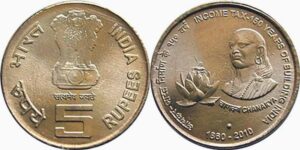
One day, an acquaintance came to meet Chanakya and said to him excitedly, “Do you know what I just heard about your friend?”
“Just wait a while”, Chanakya replied. “Before you tell me anything I would like you to go through a little test which I call the Triple Filter Test”.
“What’s that?” asked the acquaintance.
“I will tell you”, Chanakya said. “Before you talk to me about my friend, it might be a good idea to take a moment and filter what you are going to say. That is why I call it the Triple Filter Test. The first filter is ‘Truth.’ Are you sure that what you are about to tell me is true?”
“No”, the man said. “Actually, I just heard about it.”
“All right”, said Chanakya. “So you don’t really know if it is true or not. Now let us try the second filter, the filter of ‘Goodness’. Is what you are about to tell me about my friend something good?”
“No, on the contrary…”
“So”, Chanakya continued, “You want to tell me something bad about him but you are not certain it is true. You may still pass the test because there is one more filter left; the filter of ‘Usefulness’. Is what you want to tell me about my friend going to be useful to me?”
“No, not really…”
“Well”, continued Chanakya, “if what you want to tell me may not be true and is neither good nor useful, why tell it to me at all?”.
Chanakya (4th century BCE) was an Indian teacher, philosopher, economist, jurist and royal advisor. He is traditionally identified as Kauṭilya, who authored the ancient Indian political treatise, the Arthashastra. As such, he is considered the pioneer of the field of political science and economics in India, and his work is thought of as an important precursor to classical economics. His works were lost near the end of the Gupta Empire and not rediscovered until the early twentieth century. Chanakya assisted the first Mauryan emperor Chandragupta in his rise to power. He is widely credited for having played an important role in the establishment of the Maurya Empire. Chanakya served as the chief advisor to both emperors Chandragupta and his son Bindusara. The diplomatic enclave in New Delhi is named Chanakyapuri in honour of Chanakya.
Image: The Reserve Bank of India issued a coin of Rs. 5.00 denomination in February 2011, bearing the portrait of Chanakya, to mark 150 years of the country’s Income Tax Department. Courtesy: http://beekar-the-numismatist.blogspot.com/
